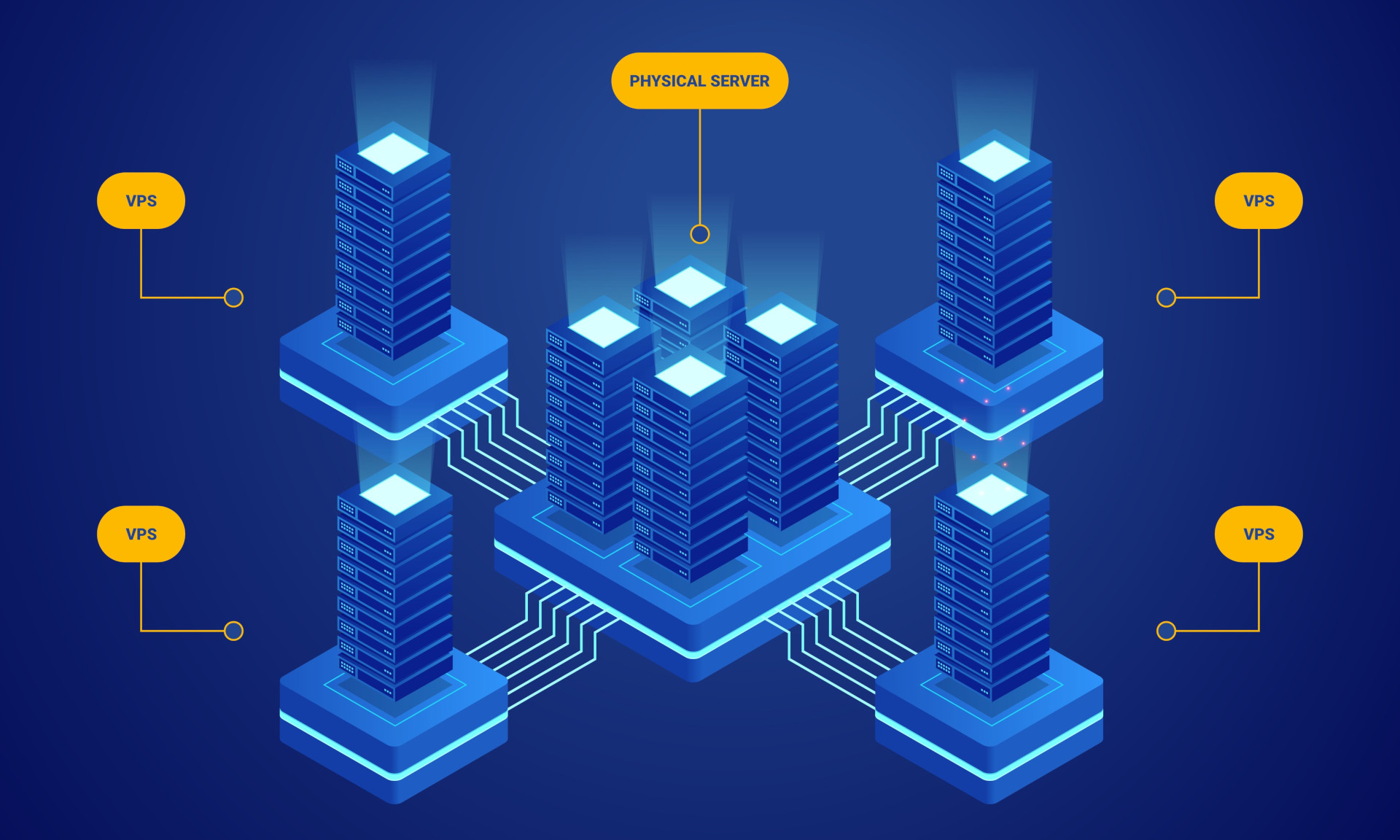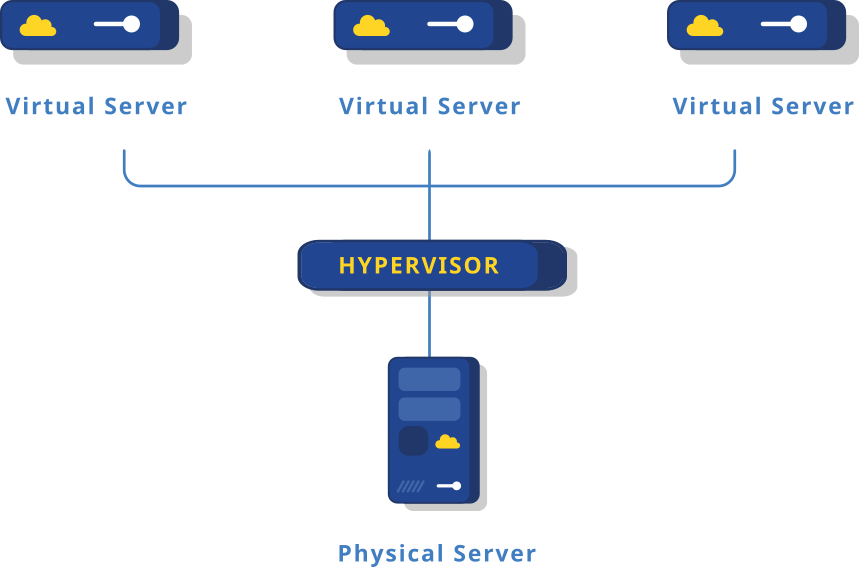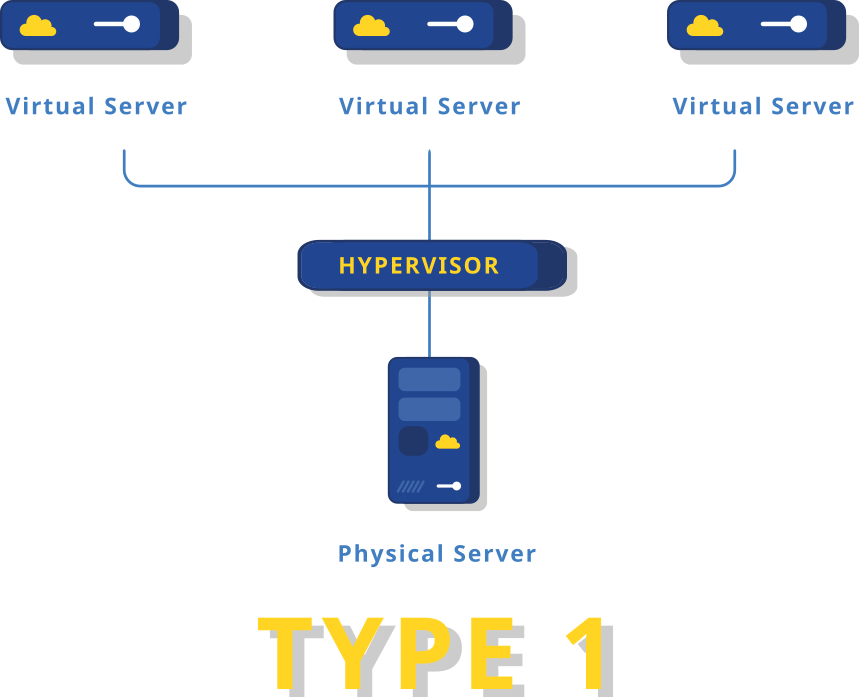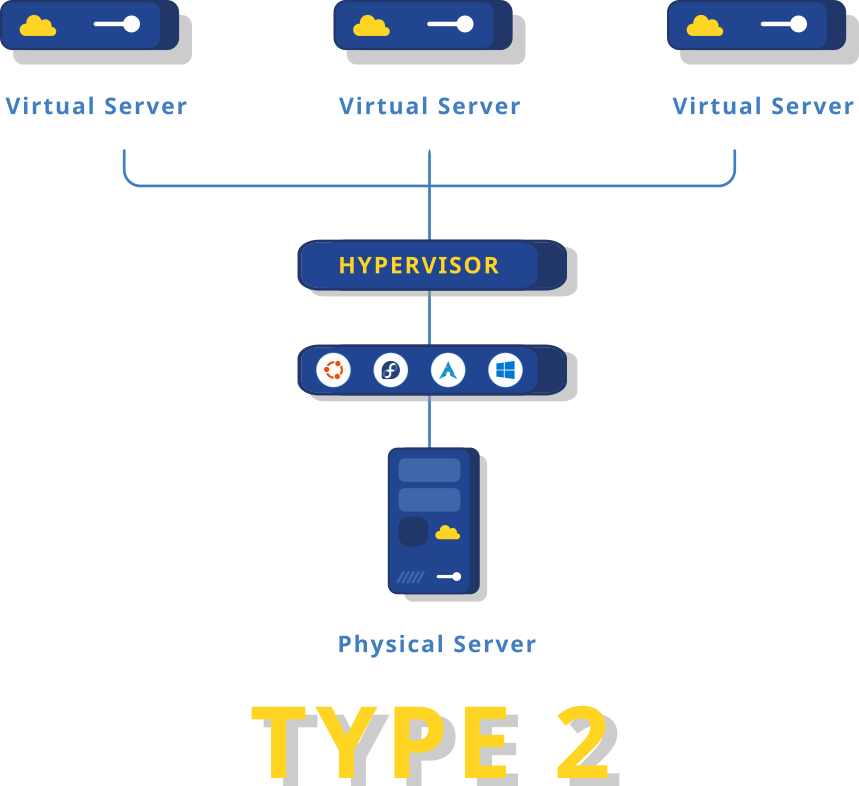Cloud Hosting
What are virtual servers? | Storm Internet

A virtual server is a server created by software called a hypervisor. The virtual server runs on top of a physical ‘host’ server and shares the host’s CPU, RAM, storage, networking, and other hardware resources. Virtual servers offer various benefits over physical servers, including cost-efficiency and on-demand provisioning. They are also known as ‘virtual private servers (VPS), ‘virtual machines’, or simply ‘VMs’.
Anatomy of a virtual server

Virtualisation of computing resources dates back to the 1960s – a time when mainframe computers were the standard for enterprise operations. To ensure they got bang for their buck (which is to say, to avoid all that computing power idling under light workloads), equipment owners employed a time-share model, which allowed a group of users to share virtualised computing resources.
As time passed, systems became more powerful and more affordable, which meant businesses no longer had to rent the computing power they needed for their applications – they could just buy their own. Which they did, and at scale, too.
By the turn of the millennium, it wasn’t uncommon to see organisations equipped with a physical server per workload – you’d have a physical machine that handled mail, another that hosted websites, another that hosted databases, and so on. As a result, data centres filled up, and more power was needed to keep those servers running and cooled.
Hypervisor Types
In the early 2000s, the production-ready hypervisor appeared on the scene to help solve these challenges. Equipment owners could now consolidate all these physical servers into one or a few powerful machines using a hypervisor to create virtual servers.
As mentioned at the beginning of this post, a hypervisor is used to create virtual servers by abstracting software from the underlying hardware. Through virtualisation, resources are provisioned and managed as isolated instances, each essentially a logical server.
There are two main types of hypervisors:
Type 1 Hypervisors

Think of a Type 1 hypervisor as a lightweight operating system that runs directly on the physical machine. These are also called bare-metal hypervisors and are the most popular type used by enterprise organisations and data centres. They offer better performance than Type 2 hypervisors, and, since there’s no underlying vulnerability-prone operating system, are also more secure.
Examples of Type 1 hypervisors include: VMware ESX and ESXi, Oracle VM, Microsoft Hyper-V, and Citrix XenServer.
Type 2 Hypervisors

Where Type 1 hypervisors run directly on the hardware, Type 2 hypervisors run as applications installed on top of an operating system. Due to increased latency (communication between the virtual machine and the hardware has to pass through the host OS), Type 2 hypervisors are typically used in testing environments or on personal computers, and can host different operating systems independent of the host OS.
Examples of Type 2 hypervisors include: Oracle VM VirtualBox, VMware Workstation/Fusion/Player, and Microsoft Virtual PC.
Benefits of virtual servers
Virtual servers offer many benefits. They are more scalable than conventional shared hosting and can be provisioned faster than dedicated servers.
Provisioning
Before virtualisation’s recent renaissance, setting up a physical server could take, at the very least, hours. Often, days: the machine had to be assembled, installed, configured, and tested.
A virtual server, on the other hand, can be provisioned in a few minutes. Configuration and testing may still take some time, but once complete the fully-configured and tested system can be saved as a template. Future provisioning of the fully-configured system using the saved template is near-instant.
Efficiency
The motivation for virtualisation dates back to the 1960s when large and very expensive mainframe computers dominated enterprise computing. To avoid underutilisation of the system’s resources, equipment owners would provide access to the mainframe on a time-share basis. With today’s powerful (though considerably smaller) machines, the same holds true: virtualization ensures efficient usage of system resources that would otherwise sit idle under single user or application workloads while still drawing power and needing cooling.
OS-Independence
Virtual servers are essentially stand-alone computer systems, which means you can run different operating systems alongside each other.. Virtual server providers will typically offer a choice between Windows and Linux operating systems to provide customers with the technology stacks they need to run their websites or other applications.
Resource scaling
Virtual servers allow for point-and-click resource scaling: easily allocate additional processing power, memory, and storage space to the virtual machine – either permanently, or only as needed. This provides a significant advantage over, for example, shared hosting that typically has a ceiling in terms of resources.
Redundancy
Virtual servers are hardware agnostic, with the only criteria that adequate hardware resources be present on the host server. This makes it easy to move a virtual server from one host to another.
Redundancies can be created across different host systems by creating snapshots of the virtual server as often as disaster recovery protocols dictate. This ensures no single point of failure, and can even be used to create real-time failover systems where a stand-by system is activated should the main virtual server fail.
Server consolidation
One significant benefit of the quest for efficiency is that several physical servers can be consolidated into one physical machine as separate virtual servers. Data centres become less crowded with physical machines, which allows organisations to reduce power consumption since they no longer need to power and cool a large number of physical servers.
Testing
Easy virtual server provisioning means it’s easy to create testing environments which are identical to production environments. As a result, testing an application or website is easier and faster since bottlenecks associated with conventional physical server setups are eliminated. Time-to-market is therefore also shorter.
Self-managed virtual servers vs. Fully-managed virtual servers
When virtualisation emerged in the early 2000s, running production (read: client-facing) virtual servers were within the purview of the experienced. It required, and still does, technical proficiency with the operating system. These are self-managed virtual servers.
But over the last few years service providers have started filling the gap, managing updates, general maintenance, backups, and security on behalf of virtual server clients. These are fully-managed virtual servers. They deliver the power and flexibility of the virtual server without the technical overhead.
Security
Self-managed virtual servers: Server and website or application security is your responsibility.
Fully-managed virtual servers: Server security is handled by the service provider. You are typically responsible for website / application security (A Storm customer? Ask us about website management.)
Backups
Self-managed virtual servers: You have to run, test, encrypt, and store backups.
Fully-managed virtual servers: Backups are handled by the service provider, leaving you more time for mission-critical tasks.
Uptime
Self-managed virtual servers: Learn to love log files and diagnostic tools since you’ll need them to investigate spikes in resource consumption.
Fully-managed virtual servers: Uptime is handled by the service provider. (At Storm you can ask us to perform specific tasks when server or application-specific events occur to ensure continued uptime.)
Skill level required
Self-managed virtual servers: Intermediate to advanced operating system proficiency.
Fully-managed virtual servers: None.
Given that fully-managed virtual servers are increasingly more affordable (e.g. Storm’s managed virtual servers start at £40 / month at the time of writing) the deciding factor for many organisations is whether the skill set and capacity exist in-house to manage these servers. Even then, what we find today is that many organisations opt to refocus that skill set on mission-critical objectives.
That said, deploying virtual servers is not without its challenges. While affordable individually, virtual servers can also chew away at budgets if not managed carefully. This refers as much to overburdening a virtual server as it does over-provisioning virtual servers; unused virtual servers still consume resources that could be appropriated more efficiently. Careful planning is required to ensure that your virtual server solution meets your organisation’s exact needs.
Speak with a Storm Expert
Please leave us your details and we'll be in touch shortly
A Trusted Partner








